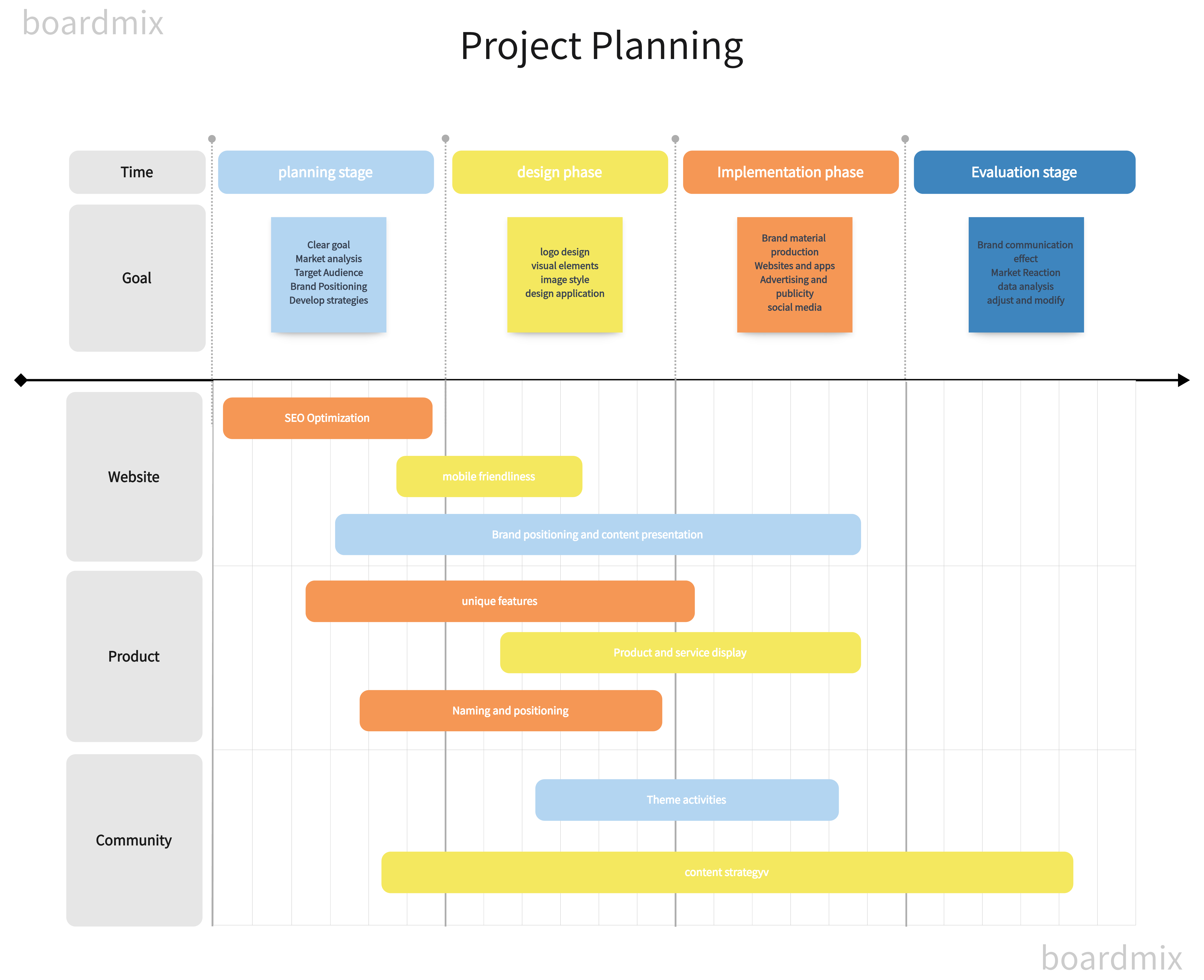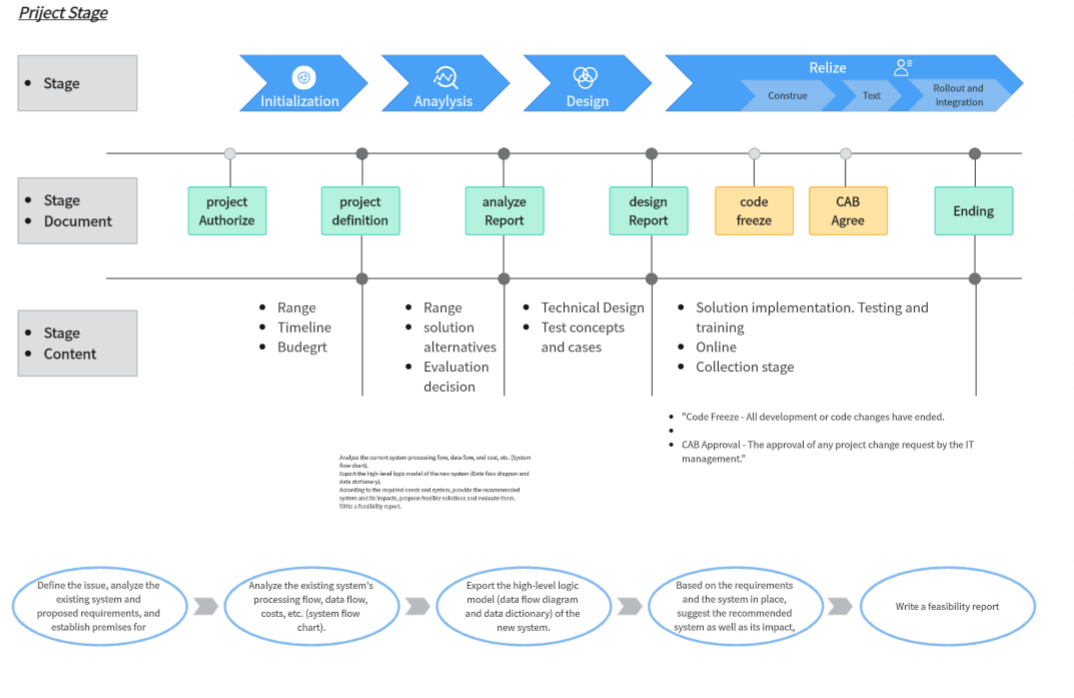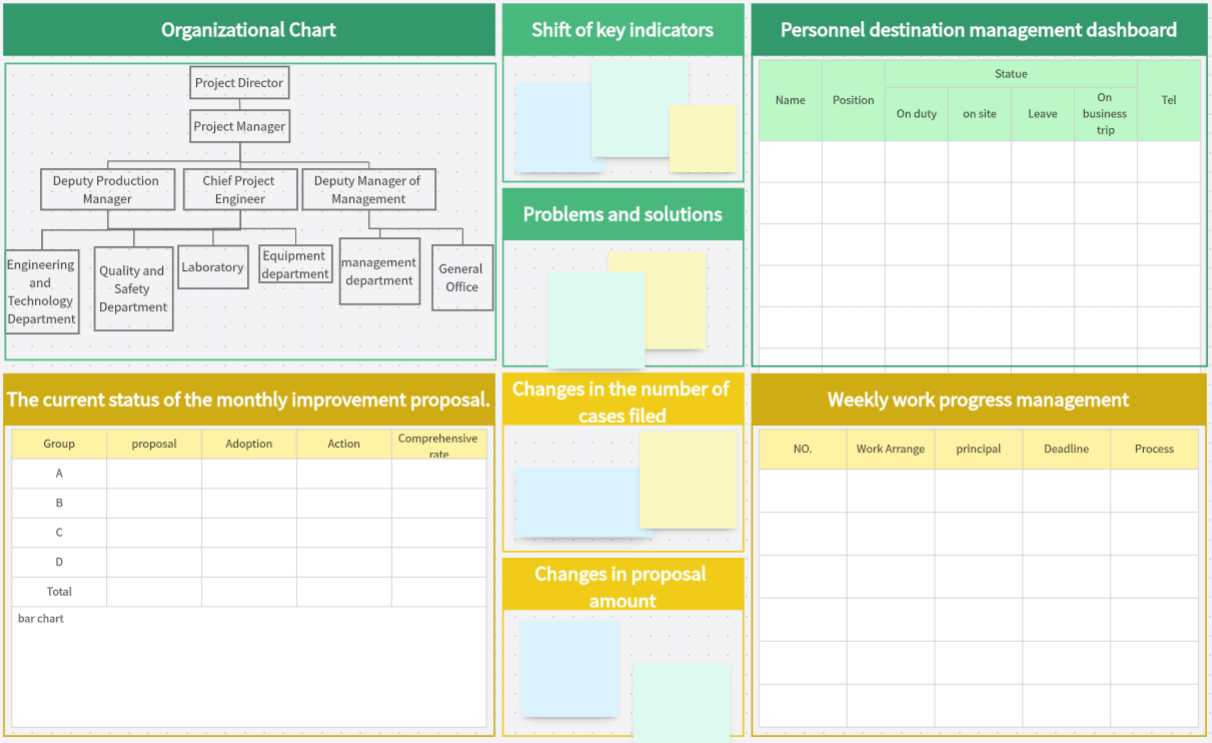A project plan outlines the objectives, implementation strategies, execution procedures, budget, deliverables, and other relevant materials for a project. It includes elements such as key milestone schedules, Gantt charts, communication plans, work breakdown structures, and the resources needed to complete the project.
A well-crafted project business plan can help prevent budget overruns, reduce workflow disruptions, and minimize project delays. This article will guide you through creating a comprehensive project plan using six steps, incorporating the use of the Boardmix online whiteboard.

1. Write an Executive Summary
The first step is to write an executive summary. This summary should be at the beginning of the project plan and provide a brief overview of its main points, reaffirming its purpose, highlighting key elements, and describing the project's outcomes.
The executive summary should include:
-Project objectives and goals
-Chosen project methodology/framework
-Final deliverables and acceptance criteria
-Key scope risks and mitigation strategies
-Milestones summary
-Project timeline and risk overview
-Resource and cost budget

Tools like the Boardmix online whiteboard can help create these components more efficiently. For example, the project plan template on Boardmix can list major tasks and work items, clarifying each phase's goals and issues. For detailed project management, use the weekly project management template to break down tasks by week, employing the important & urgent quadrant rule for better time management. Gantt charts can make you a time management expert by visually mapping out your project plan.
Keep the executive summary simple and easy to understand, especially for stakeholders. It serves as a quick reference for project managers to recall key objectives, scope, expectations, and constraints.
2. Define the Project Scope
The second step is to define the project scope, setting boundaries for the project's start and end dates, deliverable expectations, approval processes, and criteria for what warrants approval. The scope should also outline potential risks and mitigation strategies, along with who is responsible for tracking these risks. This step helps prevent scope creep.
To further safeguard against project issues, analyze and report on each phase using Boardmix’s project phase analysis and design report templates.

3. Plan Project Resources
This step involves defining the resources available for the project, including team members, time, budget, and technology. Accurate resource assessment is crucial, and using Boardmix’s project kanban template simplifies resource management. This kanban template organizes resources into a to-do, in-progress, and completed sections. Additionally, you can allocate resources to individuals and set timelines, keeping the project’s latest progress synced.
For instance, having a highly skilled team increases project success probability by 30%. Conversely, efficiency and quality suffer if the workload exceeds available resources, necessitating schedule adjustments or budget increases. Ensure timely communication of resource changes to the project team.

4. Develop a Project Schedule
Including a timeline in your project plan significantly increases its success rate. This part of the plan sets expectations for execution and delivery timelines, prompting the team to complete tasks on schedule. Adding a timeline is essential for project planning.

Utilize Boardmix’s Gantt chart template to visualize each project phase's progress and schedule, making the project timeline clear at a glance.
5. Create a Project Budget
Before starting any project, project managers must address these questions: How long will the project take? What resources and technologies are needed? What is the project’s budget? What is the project workload? These questions fall under project budget management. Regardless of the industry—engineering, IT, construction, or agriculture—considering time, cost, scope, and risk before project execution is crucial to predict profitability.
6. Monitor the Project
Project risk management is one of the three major project challenges. Without a risk management plan, teams may struggle with unexpected changes. The Boardmix online whiteboard is flexible enough to assist with planning, monitoring, reporting, and resource management, covering the entire project lifecycle.
Boardmix’s template community offers ready-made templates like Production project management templates, including change management forms and risk management tables. These templates track project change history, change information, and root cause analysis, helping teams address various issues during changes. The template set also includes project task lists and status reports, with downloadable if needed.

Conclusion
These six steps outline how to create a project plan. A project plan is central to defining, organizing, prioritizing, and allocating activities and resources throughout the project lifecycle. It plays a crucial role in guiding project implementation.
Creating a project plan can be challenging, but using the Boardmix online whiteboard can make the process much more efficient. It helps teams develop better project plans initially and enhances team management and collaboration. The Boardmix community offers a wealth of project management templates, including project timelines, plans, and cases related to software development and operations, used by major companies, aiding teams in completing project tasks effectively.












